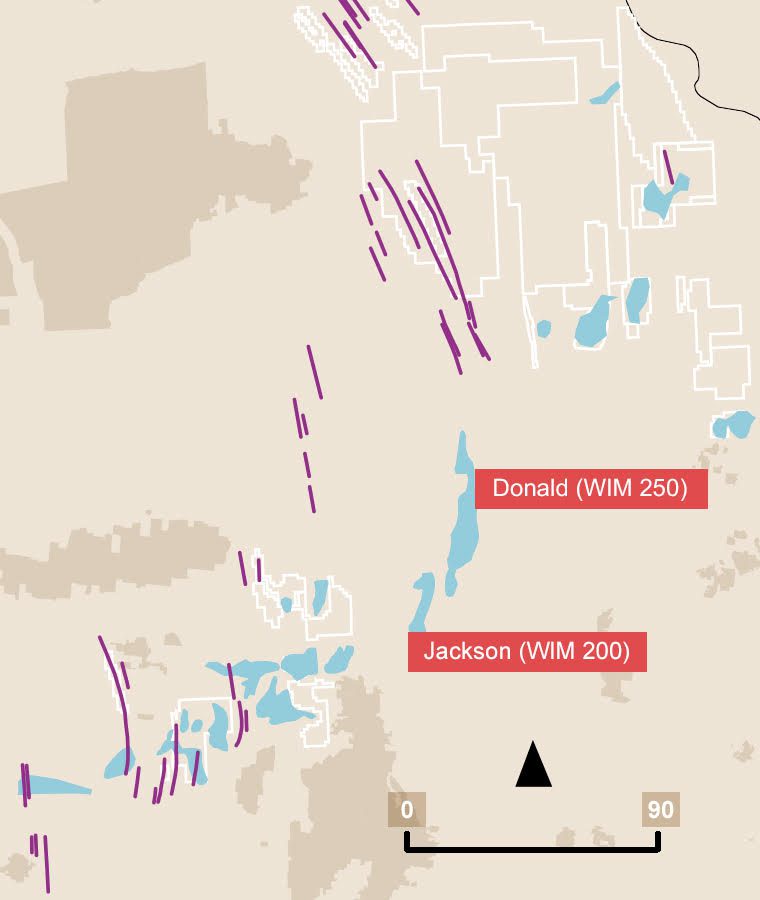Donald Rare Earth & Mineral Sands Project
Victoria, Australia
Geology
The Donald and Jackson deposits are fine grained WIM style heavy mineral sands accumulations, amenable to staged, long life mining operations. The deposits were discovered by CRA Exploration in the 1980s as part of their multi-commodity regional survey. The deposits represent part of the wider mineral sands occurrences in the Murray Basin.

Heavy mineral (HM) deposits in the Murray Basin are of two principal types: coarse grained, strandline deposits, and finer grained WIM style accumulations. Strandline deposits are characterised by relatively narrow linear ore bodies. They tend to have rich heavy mineral grades in the range of 5% to 20%, but are relatively low tonnage. From a mining perspective, strandline deposits can be short-lived. In the Murray Darling Basin, this has meant mining infrastructure has required relocation, often as frequently as every three or four years.
WIM style deposits are larger scale and are characterised by their tabular or sheet like geometry, with finer grained sand characteristics (<100 μm grain size). These shallow marine sands containing HM accumulations were deposited in the Loxton-Parilla sands of the Murray Basin in the late Miocene to Pliocene age between 7.2 and 4.5 million years ago.
WIM deposits are thought to represent accumulations formed below the active wave base in a near shore environment. While WIM style deposits tend to have lower HM grades ranging between 2% to 5%, their tonnages are of a magnitude much greater than that of strandline deposits*.
Given WIM style deposits typically contain greater tonnage and more consistent HM grade characteristics than coarse grained strandline deposits, equipment selection and design criteria are expected to allow for greater operational grade and recovery management during operations. This increases the economy of scale for initial capital investment.
In the Donald deposit, fine grained HM mineralisation tends to form internal high grade zones that trend North to South. These are the focus of the initial stages of the mining operation.
* Refer: Department of Primary Industries: Heavy Mineral Sands in the Murray Basin of Victoria, GeoScience Victoria, Geological Survey of Victoria Technical Record, 2012/1
